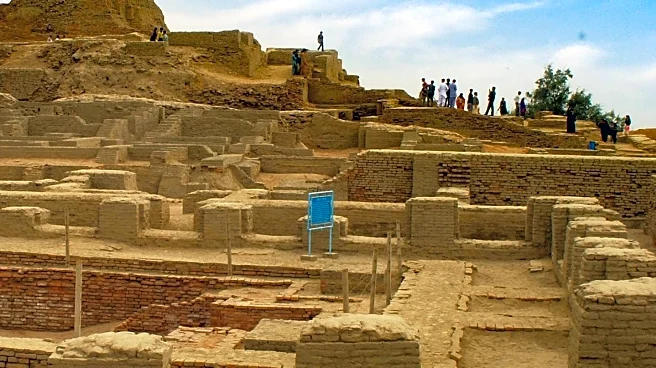What is the story about?
What's Happening?
Archaeologists in Israel have uncovered a 1,600-year-old Christian care facility for the elderly, believed to be the world's oldest nursing home. The discovery was made in the ruins of the ancient city of Hippos near the Sea of Galilee, a significant bishop's seat during the Byzantine era. The University of Haifa announced the find, highlighting a mosaic at the entrance of the building with the message 'Peace be with the elders' in Koine Greek. The facility dates back to the fourth or fifth century A.D., indicating that Byzantine society established places dedicated to the dignity and care of seniors. The mosaic's symbols, including cypress trees, fruit, and Egyptian geese, are interpreted as representing everlasting life, abundance, and blessed souls.
Why It's Important?
This discovery provides tangible evidence that care for the elderly was a societal concern in ancient times, challenging the notion that such care is a modern concept. It offers insights into the social values of the Byzantine period, where religious centers and institutions for the elderly were integrated into city life. The find may also represent one of the earliest material testimonies in the Holy Land of the Christian community assuming responsibilities for elder care, previously managed by family networks. This historical context enriches our understanding of ancient social structures and the evolution of communal care.
What's Next?
The research team has published its findings in the Journal of Papyrology and Epigraphy, suggesting further exploration of ancient care facilities and their societal roles. This discovery may prompt additional archaeological investigations in the region to uncover more about the daily lives and social institutions of older people in antiquity.
Beyond the Headlines
The ethical implications of this discovery highlight the longstanding human commitment to elder care, reflecting cultural values that prioritize dignity and respect for seniors. It underscores the continuity of such values across centuries, offering a historical perspective on current elder care practices.
AI Generated Content
Do you find this article useful?
















